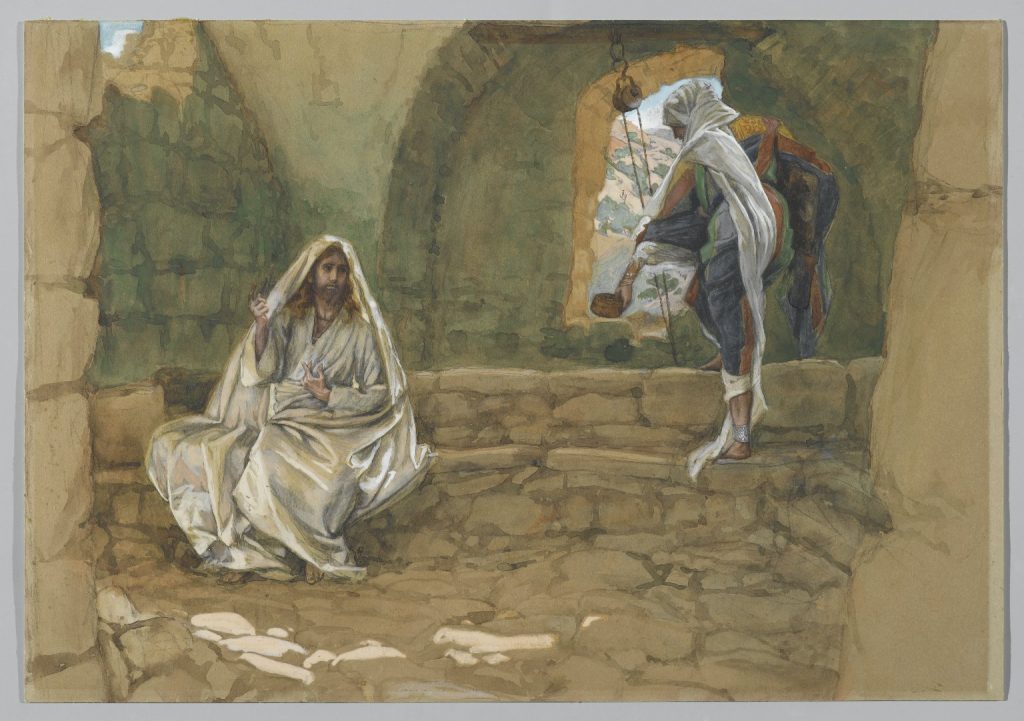When we think of the stories of Jesus, we think of some different things, such as the setting, the characters, and the lesson that it is designed to teach us. All of those are ways of teaching about Jesus and his place in our human world, as well as his teachings about God’s kingdom, but sometimes we overlook something small yet important. We remember the general story, but we tend to forget the details.
Writers are taught that details are what make a story more believable and more effective. If a traditional story contains small details, we are more likely to look at them as truthful and factual than if those details were not present.
In the story of the Samaritan woman at the well, the first detail that we notice is the Pharisees hearing that there was a competition of sorts between Jesus and John as to which man baptized more people and made more disciples. Jesus didn’t baptize people, but his disciples did, but to the Pharisees, it didn’t matter. Jesus and John were both troublemakers in their eyes.
Jesus then left Judea and started back to his base in Galilee, but to get there, he had to go through Samaria which was not exactly a friendly place for Jews. The Jews and the Samaritans had been at odds for generations, one of the main points being that the Jews worshiped at the temple in Jerusalem while the Samaritans held that Mount Gerizim was the sacred mountain where worship took place. Be that as it may, Jesus sent off his disciples to buy food as he sat down by a well, much as his remote ancestor Jacob had come to a well and met Rachel. We even notice that noon is the time of the encounter, roughly the same time that Jacob’s meeting with Rachel had taken place, a time when most women were not at the well.
Jesus told the Samaritan woman to bring her husband, and she responded that she had no husband. Jesus then informed her that he knew that she had had five husbands and the man with whom she was living at present was not her husband. History has branded her as an adulteress, but was she? Divorce among Jews was a male prerogative, and the same could be said among the Samaritan population. A man could divorce for many reasons, but the only one that was singled out was adultery, hence the idea that the Samaritan woman was an adulteress.
But what if those five husbands had died? If we think of the story of Onan (Genesis 38), who was supposed to take his sister-in-law as a wife after each of his brothers had married her in turn and then died without having a child. Onan was not willing to be the latest of a procession of dead husbands, and so he disobeyed custom and ended up paying a rather severe price. Levirate marriages, where the wife bears a child for her dead husband through the sperm of his brothers, was a way of continuing and maintaining a direct bloodline.
The well at which Jesus and the woman met was one dug by Jacob and given to his son Joseph. That’s a detail that anchors the story in a historical context. Jesus then asked for water, and the woman remarked that he had no bucket. Then Jesus tells her that had she asked him for water he would have given her living water, water which would quench her thirst forever. What did that mean? What was living water? Why was it different than regular water? And how could she, and in turn, us, obtain it?
As Jesus told her about the living water, she came to understand that he was a prophet and remarked that Samaritans had worshipped on this mountain for generations. Jesus then told her that the time was coming when it didn’t matter whether they worshiped, in Jerusalem or on Mount Gerizim, but that God would be worshiped throughout the land and all of its sacred places.
The world has many sacred places: Stonehenge, Iona, Mecca, the Ganges River, Jerusalem, Bethlehem, and many other places around the world where people gather to worship and to touch the spirituality of the site. The important thing is that God is greater than any thing or any place, and can be worshiped either by our physical presence in a church or in spirit, which can take place anywhere. That’s a detail that we sometimes forget. We attend church on Sunday, and that’s the last contact with God that we have until the next Sunday.
Perhaps we need to remind ourselves that the details are important. To live the Christian way is to surrender oneself to God throughout every hour of every day and to follow the teachings of Jesus even when they seem to be impossible to follow. Perhaps we need the faith of the Samaritan woman, running back to her people to proclaim that she had seen the Messiah because he knew the details of her life and more.
I need to consider the details of my daily life. Did I make sure that I incorporated Jesus in those details? It’s something to work on.
God bless.
Image: Tissot, James (1836-1902), The Samarian Woman at the Well, Brooklyn Museum. Found at Wikimedia Commons.
Linda Ryan is a co-mentor for an Education for Ministry group, an avid reader, lover of Baroque and Renaissance music, and retired. She keeps the blog Jericho’s Daughter. She is also owned by three cats.

